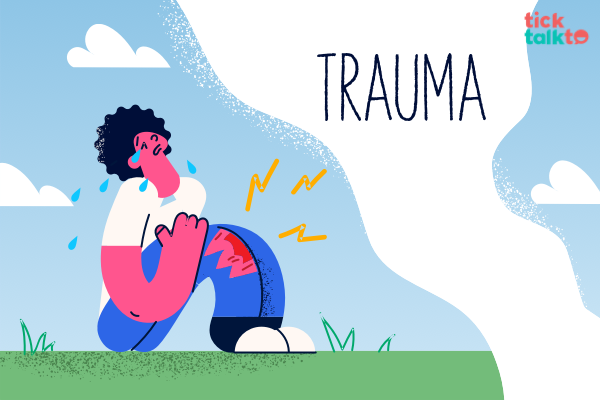Post Traumatic Stress Disorder happens to a person after a tangled mix of stressful events, causing them to feel helpless, startled and anxious such as threatened to death, sexual violence, serious injury or witnessing some disturbing event.People with PTSD may relive the event via intrusive memories, flashbacks and nightmares; avoid anything that reminds them of the trauma; and have anxious feelings they didn’t have before that are so intense their lives are disrupted.1
Causes of Post-Traumatic Stress Disorder (PTSD)
One can go through Post Traumatic Stress Disorder when they either experience or witness life changing, threatening or near death experiences.
In reference to other mental health problems, Post Traumatic Stress Disorder also can be caused by a tricky mix of;
- Inherited mental health risks including family history related to depression and anxiety.
- Individual differences since every brain reacts to stressful events differently and can contribute to Post Traumatic Stress Disorder.
- Your temperament aspect of personality involved with emotions, reactions along with their intensity and speed.
- Stressful experiences, counting in the traumatising events occurred to you.
Global stressful events like the pandemic can significantly contribute to PTSD prevalence. A survey by Anita Khokhar and Suraj Prakash Singh indicates that 28.2% of the population suffered from PTSD during lockdown in India2.
Signs And Symptoms Of Post-Traumatic Stress Disorder (PTSD)
To diagnose with Post Traumatic Stress Disorder a person must fall under certain criteria mentioned in DSM-V (Diagnostic and Statistical Manual Of Mental Disorders) which includes;
- Life threatening situations or experiences
- Actual life threat.
- Witnessing any traumatic event.
- Repeated exposure to graphics of the event.
- Experienced the following more than a month or two
- Intrusion Symptoms: Intrusive thoughts are repeated unwanted thoughts popping in our head without a warning anytime and flashbacks ( feels so real that the person is in the moment).
- Avoidance Symptoms: Avoiding or resisting anything related to the event like the place, people, situations or activities that may trigger the events. People mostly resist talking about it or even how they feel about it.
- Symptoms affect mood and thinking: A constant void of happiness or satisfaction. Followed by self blame, ongoing fear, guilt, anger or shame, feeling of detachment. (e.g I’m bad, “No One Can Be Trusted”). Distorted thoughts about oneself.
- Symptoms affect arousal activity after trauma: Arousal activities include angry outburst, problem in concentrating or sleeping, behaving recklessly or in a self-destructive way and behaving in a suspicious way.
Here is a real-life account of Emma Boman Högmark, 31, Sweden3 on their experience with PTSD;
“I got my PTSD after an abusive relationship. I couldn’t cope for many years: I lost jobs, friends and family because of it. I almost lost my kids because of it, too. In 2020, I finally got help. I did a year of Cognitive Behavioral Therapy (CBT). Part of my therapy was to tape-record some of the trauma I’ve experienced that affected my life the most. It was so hard—the toughest thing I’ve done in my whole life. I just went to my last session and I no longer have PTSD. It’s been a tough road, but so worth it! I’m free.“4
Emma Boman Högmark, 31, Sweden
Diagnosis Of Post-Traumatic Stress Disorder (PTSD)
Certain steps and guidelines must be followed to diagnose Post-Traumatic Stress Disorder;
- Psychological Evaluation: A psychological evaluation is mandatory which includes questions related to your experiences. These include assessments like PCL-5 and IES-R assessments. You can easily access these assessments using the TickTalkTo App and also also consult a therapist from the comfort of your home.
- Criteria under DSM-5 (Diagnostic and statistical manual of mental disorders) by APA (American Psychiatric Association) defines PTSD. Guidelines mentioned under this should be followed by psychologists and psychiatrists.
- Physical Exam: A physical exam is a must to diagnose Post-Traumatic Stress Disorder since there might be a physical ailment responsible for PTSD like symptoms.
Treatment for Post-Traumatic Stress Disorder (PTSD)
Singer and songwriter Ariana Grande has opened up about her struggles with PTSD. The trigger for her PTSD was the suicide bombing at her concert that killed 22 people in Manchester, UK, in May 2017. Interestingly, she got a brain scan done that showed the physical impact that PTSD has had on her brain. She publicly shared the brain scan with her fans on Instagram and they are showing a great deal of support over the ordeal. Grande famously stated that therapy saved her life.
“Therapy has saved my life so many times.”
Ariana Grande
If you have PTSD (posttraumatic stress disorder), or have symptoms that last longer than a few months after the traumatic event is over, your best chance of getting better is by working with a mental health or medical provider. Good treatments are available that have been shown to help all kinds of people. If you continue to experience distress, see a mental health or medical provider. Online counselling is a good place to start. Or, talking to your primary care provider is a good place to start.
Treatment of Post-Traumatic Stress Disorder includes psychotherapy at a primary level along with some medications if required. It helps you regain your control over your thoughts and feelings, it includes:
- Coping up strategies are taught.
- Teaches you to think better about yourself.
- Helps you let go of the experience.
- Teaches you new skills to address your symptoms.
The aim is to help you improve your negative thought patters that are causing you trouble in your daily life routine. Therapy helps you open up and talking about the events you witnessed. Tele-therapy allows you to connect to a therapist in a safe space facilitating therapy sessions via audio-video calls and direct messages or a combination of both. If you feel even a minor discomfort in your life do not worry or over think it, act over it. Remember, healing is a slow but a beautiful process.

 Yashika Agarwal
Yashika Agarwal


